Beyond Black Hair and Heavy Makeup: The Rich History and Rebellion of Gothic Fashion
You probably remember it from a lot of horror movies: there’s one character we almost immediately recognize as “Gothic.” You know, a girl with black clothing and other dark shades, rich textures, accompanying accessories, and more. It’s no coincidence because gothic fashion is integral to global horror culture. Gothic fashion is more than just a style of clothing; it is a cultural, even artistic, statement that says quite a bit about the person who chooses it. From an appeal towards the dark, some might say rebellious sides, to an attempt to connect with the gothic characters that are so beloved in current culture.
Although many people may see gothic fashion as a passing trend or a temporary expression of “youthful rebellion,” the gothic style has been with us for many years, with periodic changes from time to time. In the following review, we’ll learn everything you need to know about Goth clothing, including the prominent icons from the past and present who have made it an art form.
What Is Gothic Fashion?
Gothic fashion is a unique and visually striking style of clothing that evolved from the Gothic subculture, a movement that began in the late 1970s and early 1980s, rooted in the post-punk and goth rock music scenes. What started as a musical and cultural expression quickly developed its distinct aesthetic language, blending darkness, mystery, and a haunting sense of romanticism.
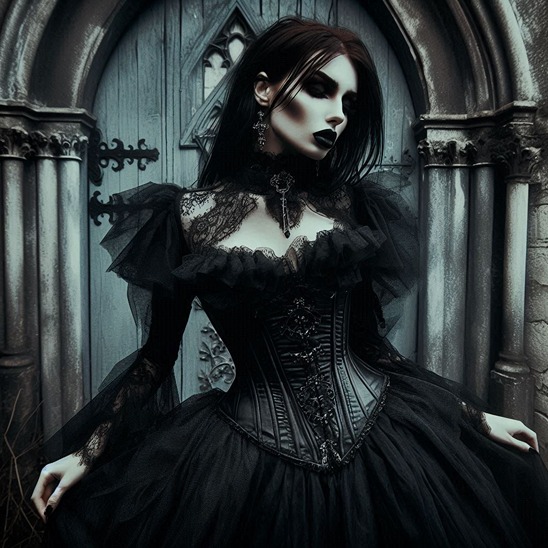
Although there is no ultimate definition of this style, it has some unique characteristics:
Color: Mostly Black, But Not Only
Suppose you ask people what the hallmark of the Gothic style is. In that case, many may mention black, whether in clothes or accessories or accompanying makeup (after all, gothic makeup is an integral part of the image here).
However, it is essential to remember that, contrary to popular belief, the gothic style is not all about black. One can incorporate other dark shades, such as purple, blue, and “blood” red, adding more interest and depth to the overall performance. You can even combine the dark shades with light, even white, to create an impressive, dramatic contrast.
The World Of Rich Textures
Regarding materials, gothic fashion may prefer “rich” textures such as velvet, leather, silk, or lace. The dramatic effect works here, including Victorian dresses, long skirts, corsets, puffy sleeves, high collars, high heels, etc.
Gothic shoes, for example, usually have a relatively high platform, from heels to massive boots.
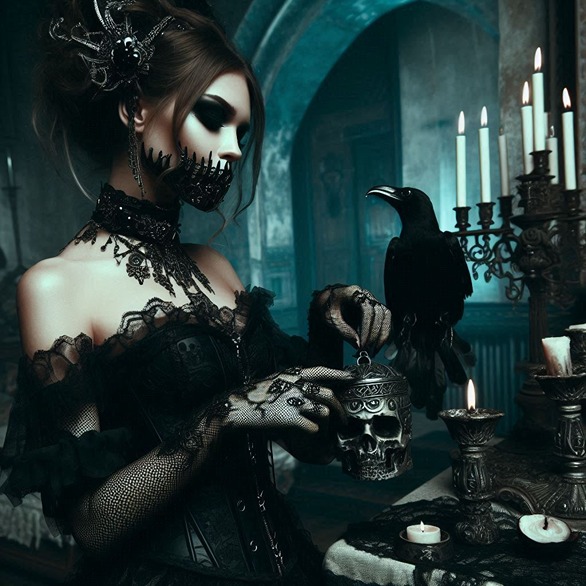
Gothic Accessories and Jewelry
The image we know from horror movies of a Gothic character with heavy makeup, tattoos, piercings, and earrings (in more or less routine places) may be a bit exaggerated. Still, it is impossible to ignore the fact that the gothic style combines the use of jewelry and accessories. Usually, these are items with a significant presence, “even heavy,” with decorations that connect to the Gothic world.
Gothic jewelry may have religious or mysterious symbols, with skulls, bones, bats, and inverted cross motifs. You can complete the look with items like:
![]() Wide-brimmed hats
Wide-brimmed hats
![]() Lace gloves
Lace gloves
![]() Thick belts
Thick belts
![]() Shoulder bags (a special place for leather or imitation leather bags)
Shoulder bags (a special place for leather or imitation leather bags)
![]() Long scarves
Long scarves
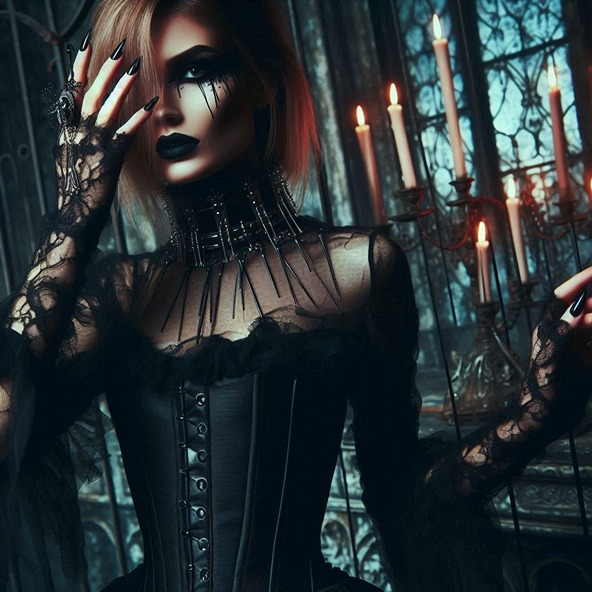
Gothic Makeup
Gothic clothing style often goes hand in hand with matching makeup, and there are some common characteristics between gothic women and men. Beyond clothing and black hair (sometimes dyed black), the goal of makeup is to create as dramatic an appearance as possible. You can achieve this goal by using makeup accessories such as eyeliner, nail polish, and lipstick in dark shades (for example, dark red or purple) or black. Sometimes, the goal is to contrast light skin and makeup like this.
There is no shortage of guides that explain how to create gothic makeup from A to Z. Here is one of the most prominent:
💀 Killer Deals & Scary Recommendations 💀
🎭 Costumes & Accessories
HalloweenCostumes Fun Costumes Entertainment Earth
🛒 Online Shopping
AliExpress Amazon Walmart Etsy
🧛 Collectibles & Horror Brands
Funko Hot Topic Lego Spirit Halloween
🎢 Attractions & Tours
GetYourGuide Tiqets Viator Klook
📖 Blogs & Horror Sites
Bloody Disgusting iHorror Fangoria
🩸 Disclaimer: Some links are affiliate links. The price stays the same – it just helps keep the site alive 👻
Where Did Gothic Fashion Come From?
We can easily argue that a gothic clothing style draws inspiration in many cases from different periods in history, such as the Victorian era (the peak of the Industrial Revolution in Britain, sometime during the 19th century) or the Elizabethan era (the period when Elizabeth I ruled England, from the 1650s to the early 1700s). Many believe the goth fashion rose from Victorian acts of mourning.
You will also find motifs that come from other worlds, even controversial ones, such as BDSM, which mainly expresses erotic elements based on relationships of control. Many people mistake goth with other fashions with some similar motives, like emo or heavy metal fashion, whose characteristics deserve a separate article.
The Tight Connection Between Gothic Music And Fashion
Gothic fashion grew hand in hand with the gothic music scene, which developed in British clubs in the late 1970s and early 1980s as a punk subgenre. Bands like “The Cure,” “Bauhaus,” and “Siouxsie and the Banshees” created not only the Gothic soundtrack of the period but also its visual aesthetic.
Over the years, gothic music has branched out into many sub-genres (Gothic rock, Gothic metal, dark wave, etc.), each with its visual style. Festivals like Wave-Gotik-Treffen, which has been held in Leipzig, Germany, since 1992, and M’era Luna Festival, taking place in Hildesheim, Germany, from the early 2000s, have survived for decades and become central meeting places for members of the global Gothic community. At these festivals, fashion is a central part of the experience.
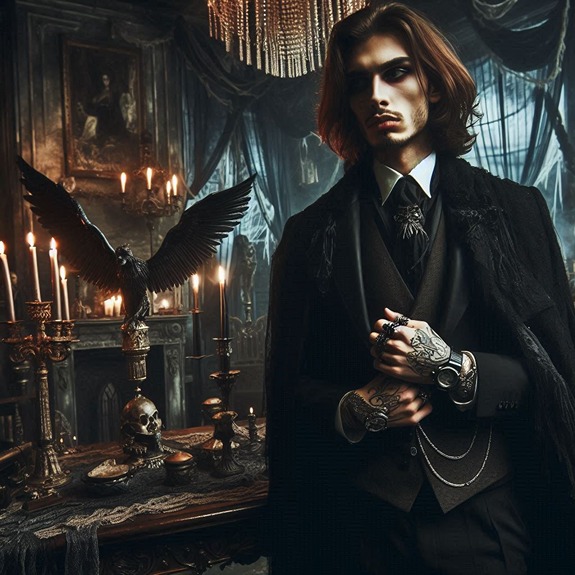
Iconic Goth Characters
In recent decades, we have encountered several celebrities with a “Gothic” look, some of whom have become true fashion icons. One of the Gothic style pioneers was Siouxsie Sioux, the vocalist of “Siouxsie and the Banshees.” This British band operated for two decades (1976-1996), initially in the punk style and then in the world of Gothic rock, a musical style that fits perfectly into the world of horror. Sioux herself did not like the nickname “Queen of Gothic” that she got thanks to her dark clothes, wild black hair, “punk” attire, heavy black makeup around the eyes, and the look you can define as “tormented,” also identified with the Gothic appearance. It is associated with the mourning customs of women in the Victorian era, who were dressed in black.
Another classic gothic icon is Robert Smith, the lead singer of “The Cure.” Smith stood out with his messy, wild hair (mainly, the ends are far from uniform), black clothing, and, of course, his makeup, with elements such as bright lipstick in shades of red, black eyeliner, and more. Smith chose relatively subtle, even “feminine” elements, which he claimed to have adopted long before he became a well-known figure.
In recent years, we have witnessed the tremendous success of Billie Eilish, whose appearance incorporates diverse gothic elements such as dark colors, presence-filled clothing, and of course, her exploration of dark themes, which you can also tell by the lyrics of her songs and musical style she has created. Her tremendous success, including nine Grammy Awards, two awards at the American Music Awards, and even two Guinness World Records, has led “new” young people to discover gothic fashion. Even if it is unclear whether you can define Billie Eilish as “gothic” in the complete sense of the word, there is no doubt that she (and her music) have some distinct characteristics.
Famous And Inonic Gothic Characters In Horror
Movies and TV series from our favorite genre have always featured characters with distinctly gothic characteristics – and no, we don’t just mean the worn-out supporting character of the tattooed and pierced gothic outsider, sometimes a lesbian, who appears in quite a few films as a side character with stereotypical aspects.
One of the main characters in this context is Dracula, or more precisely, the Hungarian-American actor Bela Lugosi, who played the blood-thirsty vampire in the 1931 masterpiece “Dracula,” as well as other classic horror characters such as Igor, Dr. Frankenstein’s assistant. Lugosi was so identified with the character of Dracula and the gothic style associated with it that he asked to be buried in Dracula’s suit. In 1979, the debut single of the British post-punk band “Bauhaus” was released, with the name “Bela Lugosi’s Dead” – which is considered by many to be the first album released in the gothic rock style.
Morticia Addams from “The Addams Family” – the wife of Gomez Addams and the mother of Wednesday and Pugsley Addams – is another classic gothic character. American cartoonist Charles Addams created her as part of the famous family that bears his name (first as macabre cartoons saturated with black humor, published in “New York Magazine”). Morticia Addams is a thin witch with extremely fair skin, contrasting with her long black hair. She wears tight black dresses with ruffles that resemble “octopus tentacles.” Makeup is also an integral part of the character, with Wednesday mentioning in the original series that she doesn’t use actual makeup but baking powder.
Wednesday Addams brought goth back into fashion in a big way, thanks to the hit Netflix series “Wednesday,” where Jenna Ortega plays her. Wednesday is a very goth character, with hallmarks such as black hair with long braids (again, in contrast to her pale skin tone), a black dress with a white collar, and black shoes and stockings, all of which fit perfectly with her bizarre character and of course that iconic dance scene. At some point, goth fashion also became associated with Ortega herself, who began wearing dark clothing and heavy makeup, perhaps inspired by the character she played. Ortega has stated that her real-life style has a “dark goth fashion sensibility,” whatever the hell it means. She claimed that appearing on the show changed her fashion taste and made it difficult for her to separate herself from Wednesday, at least in terms of fashion.
Other classic goth characters include:
![]() Lily Munster from the 1960s TV series “Monsters,” which director Rob Zombie made into a disappointing movie in 2022. Rob Zombie’s wife, the infamous Sherry Moon Zombie, played Lily in that movie and ruined it.
Lily Munster from the 1960s TV series “Monsters,” which director Rob Zombie made into a disappointing movie in 2022. Rob Zombie’s wife, the infamous Sherry Moon Zombie, played Lily in that movie and ruined it.
![]() Eric Draven from “The Crow” – played by Brandon Lee in the 1994 film (which, as you may recall, ended in a horrific on-set accident in which Lee was shot to death) and more recently by Bill Skarsgård, in the disappointing remake of “The Crow.” On a side note, “The Crow” films are generally characterized by a gothic atmosphere, which closely follows the comic books that inspired them, and include an excellent soundtrack with many gothic touches by bands like “Stone Temple Pilots,” “The Cure,” “Rage Against the Machine” and more.
Eric Draven from “The Crow” – played by Brandon Lee in the 1994 film (which, as you may recall, ended in a horrific on-set accident in which Lee was shot to death) and more recently by Bill Skarsgård, in the disappointing remake of “The Crow.” On a side note, “The Crow” films are generally characterized by a gothic atmosphere, which closely follows the comic books that inspired them, and include an excellent soundtrack with many gothic touches by bands like “Stone Temple Pilots,” “The Cure,” “Rage Against the Machine” and more.
![]() “Beetlejuice” introduced several gothic characters, which Tim Burton (one of those identified with the gothic style in cinema) brought to life. One of the most prominent is Lydia Deetz (Winona Ryder). In the original 1988 film, Lydia Deetz was a goth girl who dreamed of becoming a photographer and almost married Beetlejuice. In the sequel, “Beetlejuice Beetlejuice,” Lydia is already more mature, the mother of the teenage Astrid (played by Jenna Ortega, but who)
“Beetlejuice” introduced several gothic characters, which Tim Burton (one of those identified with the gothic style in cinema) brought to life. One of the most prominent is Lydia Deetz (Winona Ryder). In the original 1988 film, Lydia Deetz was a goth girl who dreamed of becoming a photographer and almost married Beetlejuice. In the sequel, “Beetlejuice Beetlejuice,” Lydia is already more mature, the mother of the teenage Astrid (played by Jenna Ortega, but who)
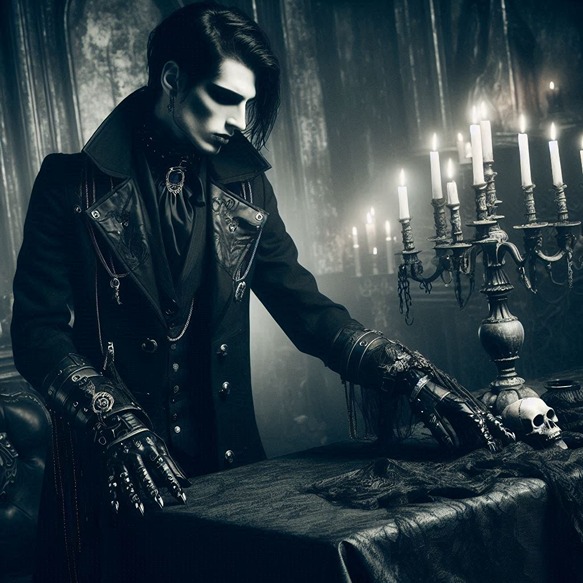
The Criticism Of The Gothic Style
We live in the age of social networks, in which various fashion trends – more or less silly – are created very quickly. You can see a shred of clear evidence in goth fashion, for better or worse. For better, influencers, celebrities, and even ordinary people can reveal their style and innovations, revealing something about their personalities. The expansion of the style allows young people to discover the goth culture and develop their identity in this field. On the negative side, there is criticism today about what is known as “show-off Gothicism,” that is, the external adoption of elements that may appear gothic without a deep understanding of what lies behind them on a cultural or even philosophical level.
The entry of gothic fashion into the mainstream, thanks in part to the success of films and series featuring fashionable Gothic icons, has changed the game’s rules, according to critics. If in the past, gothic fashion in particular, or the Gothic style in general, were identified with differences and rejection of familiar social norms, today, it is a tasteless decoration. This gothicness is identified with shop windows and less with the essence. According to some who have adopted it, gothic fashion is much more than “just” black clothing; it is a rich cultural expression with a long history and deeper meaning.

Where Can You Buy Gothic Fashion Items?
The number of stores that focus just on gothic style across the globe is relatively limited, but you can still find many superb stores and fashion chains. You will occasionally find collections or individual clothes in the pure Gothic style in the big fashion stores and chains, and you can start your search there. Another more focused option is alternative fashion, metal stores, or shops focusing on the gothic subgenre.
There are many gothic fashion items in the most prominent international online shops and markets, including:
- Amazon offers a growing range of gothic fashion items, especially accessories and essential wardrobe pieces.
- AliExpress – for items on a lower budget, although sometimes of lower quality. On the other hand, there are many bargains at desirable prices.
- HalloweenCostumes – offers a lot of gothic costumes (for example, a Wednesday Addams costume, or a Beetlejuice costume), as well as a long list of clothes and accessories that can create the perfect gothic look for you
- Etsy offers an excellent platform for finding unique handmade items, with independent artists worldwide creating most of them. You will find a variety of gothic items on Etsy, sometimes custom-made. Prices may be higher
- Hot Topic – An American fast fashion chain that specializes in clothing and accessories that are purely countercultural, including the Gothic style of clothing
- Punk Design: A company founded in 2017 that provides a wide range of fashion items in Gothic, punk, grunge, and other styles.





